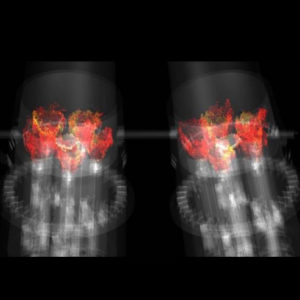

 Hyperion Research has published a new case study on how General Electric engineers were able to nearly double the efficiency of turbines with the help of supercomputing simulation.
Hyperion Research has published a new case study on how General Electric engineers were able to nearly double the efficiency of turbines with the help of supercomputing simulation.
HPC plays a critical role because its computational horsepower can solve the equations used to
represent key physical behaviors. Also, the large memory capacity of an HPC system is needed to
store the models of the geometries and boundary conditions of the physical systems. It is also
essential to create the visualization of the simulation results used by GE engineers to better
understand what is happening inside the gas turbine generators.
Understanding physical behaviors in harsh environments is extremely hard, and at times, critically important. That is the situation General Electric (GE) engineers faced when designing their new heavy-duty gas turbine generator. Gaining even 1% greater efficiency could save their electric utility customers millions of dollars and improve GE’s world-wide competitiveness. The key issues involved a better understanding of the fluid dynamics and reactive flow behaviors in the turbine’s 1,500 degree Celsius combustion chambers and the interactions between the 2 to 16 individual flames in the chambers. GE Power engineers had reached the limits of theory and experiments, motivating them to apply advanced modeling and simulation.
When the engineers at the GE Power division realized that their traditional approaches to designing
heavy-duty gas turbine generators were insufficient, they turned to the GE Global Research
computational combustion lab. In turn, the combustion lab approached Oak Ridge National
Laboratory (ORNL) and Cascade Technologies. By using the Titan supercomputer at the ORNL
Computational Leadership Facility (OLCF), researchers adapted and applied the CHARLES code to
understanding the complex physics found inside a gas turbine. This involved creating a nearly billion
cell mesh to run simulations on 8,000 to 16,000 Titan processor cores.
With these advanced modeling and simulation capabilities, GE was able to replicate previously observed combustion instabilities. Following that validation, GE Power engineers then used the tools to design improvements in the latest generation of heavy-duty gas turbine generators to be delivered to utilities in 2017. These turbine generators, when combined with a steam cycle, provided the ability to convert an amazing 64% of the energy value of the fuel into electricity, far superior to the traditional 33% to 44%.
All information that you supply is protected by our privacy policy. By submitting your information you agree to our Terms of Use.
* All fields required.



